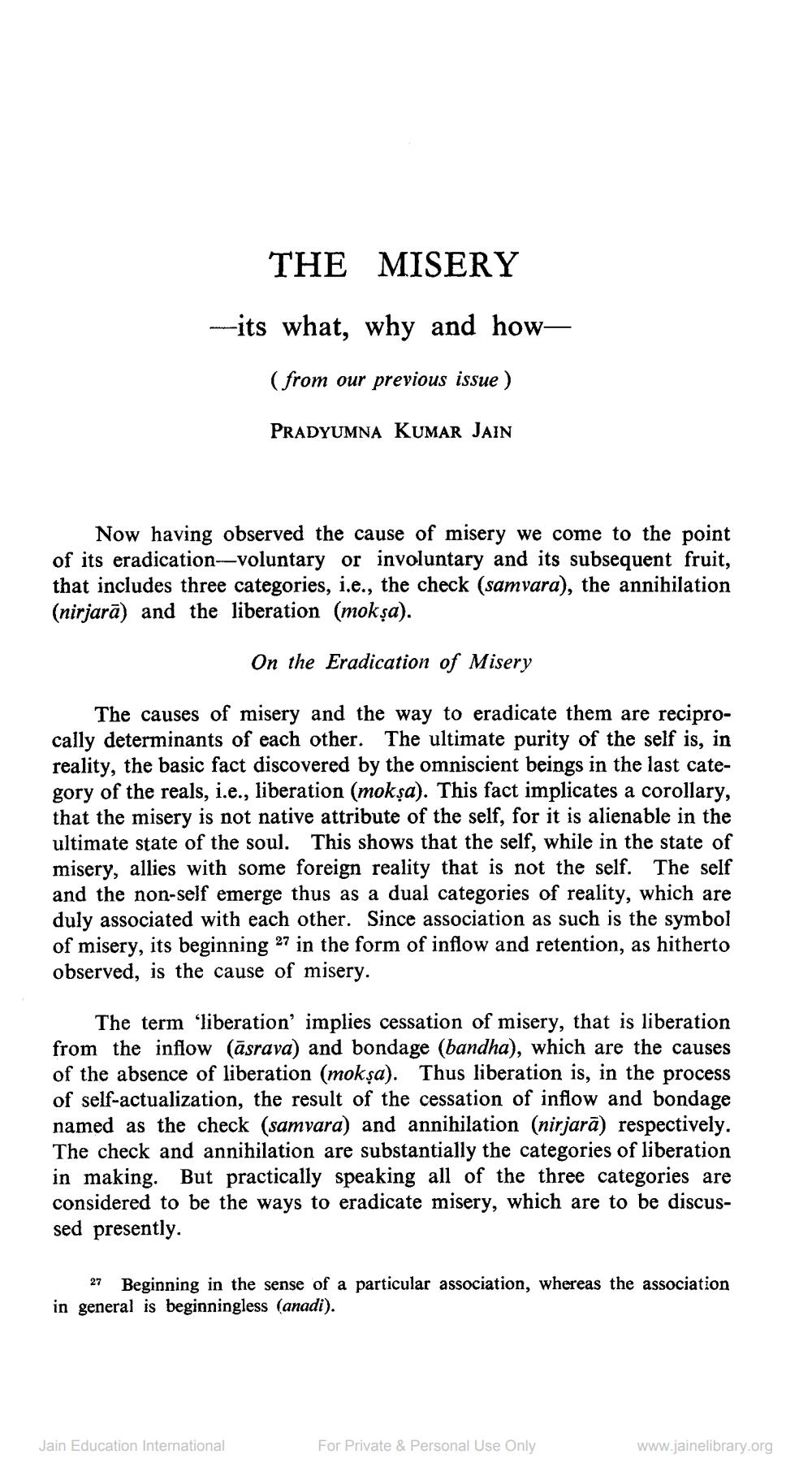________________
THE MISERY
its what, why and how
(from our previous issue)
Now having observed the cause of misery we come to the point of its eradication-voluntary or involuntary and its subsequent fruit, that includes three categories, i.e., the check (samvara), the annihilation (nirjarā) and the liberation (mokşa).
On the Eradication of Misery
The causes of misery and the way to eradicate them are reciprocally determinants of each other. The ultimate purity of the self is, in reality, the basic fact discovered by the omniscient beings in the last category of the reals, i.e., liberation (mokṣa). This fact implicates a corollary, that the misery is not native attribute of the self, for it is alienable in the ultimate state of the soul. This shows that the self, while in the state of misery, allies with some foreign reality that is not the self. The self and the non-self emerge thus as a dual categories of reality, which are duly associated with each other. Since association as such is the symbol of misery, its beginning 27 in the form of inflow and retention, as hitherto observed, is the cause of misery.
PRADYUMNA KUMAR JAIN
The term 'liberation' implies cessation of misery, that is liberation from the inflow (asrava) and bondage (bandha), which are the causes of the absence of liberation (mokşa). Thus liberation is, in the process of self-actualization, the result of the cessation of inflow and bondage named as the check (samvara) and annihilation (nirjarā) respectively. The check and annihilation are substantially the categories of liberation in making. But practically speaking all of the three categories are considered to be the ways to eradicate misery, which are to be discussed presently.
27
Beginning in the sense of a particular association, whereas the association in general is beginningless (anadi).
Jain Education International
For Private & Personal Use Only
www.jainelibrary.org




